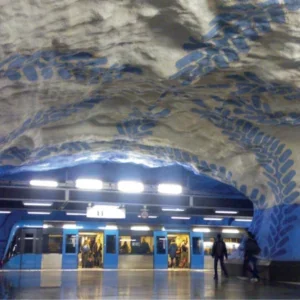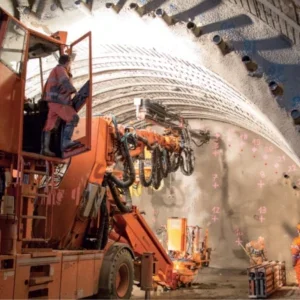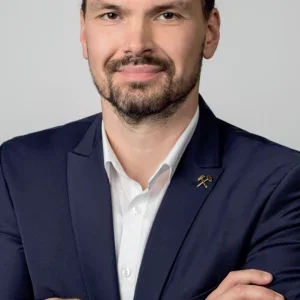Lifetime Achievement Award
Garry Stevenson
Garry has more than 40 years of experience in hydro power and underground works (tunnels and rock caverns). He has participated at every level of project design for tunnels and hydro power. Garry mentored and supervised a team of young and experienced engineers, ensuring high quality design and good business relationships with owners and clients. Some major projects: Peace River Site C; Kemano Completion Hydro Project Powerhouse Cavern; Tailrace Tunnel Repairs at Churchill Falls 2001; Kwangju Subway Project, South Korea; Nam Theun 2 1,074MW Hydro Project, Laos; Snoqualmie Hydro 52MW Upgrade Project (oldest underground powerhouse in the Americas); Porce III 688MW Hydro Development, Colombia; Menga 50MW Hydro Project Papua New Guinea; Maduru Oya Irrigation Project, Sri Lanka.
Garry has been an active member of TAC starting in the mid- 1980s. He performed numerous functions for TAC, including: Chair BC Chapter; TAC President 2005-2008; responsible for TAC bylaws; coordinated student theses award; served on nomination committee at various times. Garry supported and mentored young TAC executives during and after his term as president.
Garry is a registered Professional Engineer and Professional Geoscientist in British Columbia; and a registered professional engineer in Washington.
I am honoured to be selected by the Tunnelling Association of Canada to receive the Lifetime Achievement Award. I have had a rewarding career in geotechnical engineering in general and especially in the field of tunnelling. I have also had a long involvement in TAC that has been equally rewarding.
Western Canada was not a hotbed of tunnel projects for most of my career. I was fortunate to work on several overseas projects that provided tunnelling experience. They also provided an opportunity for me to gain experience in situations where I could not easily turn to seniors back in the office. Making design decisions that proved to be reasonable without being overly conservative gave me confidence relatively early in my work life. My involvement in the Ok Tedi project in Papua New Guinea stands out as memorable. Most of the power tunnel was within extremely weak shale that quickly slaked on exposure. More than 30 years later, I am working on the Site C project in northern British Columbia in nearly identical shale and the lessons from Ok Tedi are directly applicable to this current work.
I was fortunate to be the design lead for the underground powerhouse, penstocks and associated tunnels, and to also be involved in the power tunnel investigations and design for the Kemano Completion Project in the late ‘80s. The project was cancelled midway through construction, but not before excavation of the powerhouse, its tunnels and one-half of the power tunnel was completed. This project was excellent experience, coming relatively early in my career. It is gratifying to see that the owners are now completing the power tunnel to provide security of water supply.
Tunnelling, like most endeavours, requires a team for investigations, design and construction planning. I have worked for and with excellent mentors and colleagues throughout my career. It is a pleasure to now be mentoring young, enthusiastic engineers on several tunnelling projects.
I can clearly recall, in fact I can recall exactly where I was and who I was with, nearly 40 years ago when founding TAC member and former president Ray Benson came into the office, interrupted us, and told us (!) that we would be joining the newly-formed association. Join we did. I’ve served on many committees since then for conference organization, the British Columbia chapter, and as a national director, vice president and president. It has been a pleasure working with fellow members over those many years. I’ve developed several friendships in that time that continue to this day.
I have been blessed to work in a field of practice where it is a joy to go to work every day. Maybe there have been a few sleepless nights, but they have been worth it. My thanks to TAC for this honour.
Canadian Infrastructure project of the Year 2018
The Eglinton Crosstown – Tunnels
The Eglinton Crosstown Light Rail Transit (LRT) Project is part of an CAD 9.1bn (USD 6.9bn) investment by the Ontario provincial government to expand transit in the Toronto area. The project is being developed by Metrolinx, an agency of the Government of Ontario, to provide 19km of dedicated LRT service within the City of Toronto along Eglinton Avenue. Upon completion in the year 2021, the Crosstown will be the first LRT constructed in Toronto and will be the largest transit expansion in the history of Toronto. It will link regional and local transit, cut travel time along the route by half and provide over a thousand jobs during construction.
The Eglinton Crosstown Tunnels project included 9.7km of twin tunnels (5.75m internal diameter) constructed by four EPBMs, along with the construction of 10 cross passages and two emergency exit buildings. Tunnelling construction commenced in 2012 and was completed in 2017. The tunnels were lined with a precast concrete tunnel lining system. The project also included construction of excavations for launching of TBMs of up to 130m in length and 20m in depth. Twenty station headwalls were constructed using either secant pile or jet grouting methods and extensive relocation of critical utilities and infrastructure was performed in order to allow tunnelling to begin. All of the above was completed in a dense and dynamic urban environment.
Challenges included tunnelling under active GO passenger rail lines, lifting and transporting of TBM shields in one piece over an active subway line and managing and relocating aging and complicated infrastructure utilities.
The ground conditions along the alignment (consisting of soft ground glacial till deposits) posed a significant risk to more than 1,400 structures and 800 utilities within the construction zone of influence. Tunnelling was successfully completed by limiting settlements to averages less than 0.2 per cent with no major impacts to any existing infrastructure. Significant instrumentation and monitoring was completed along the tunnel corridor to monitor and interpret ground movements during construction. In addition to the sensitivity of tunnelling adjacent to existing infrastructure, construction in residential communities representing broad demographics required effective public engagement and minimization of stakeholder disruption.
The project started under tight constraints with an urgent need to complete the tunnels for handover to the follow-on station contract. Considering the scope and complexity of this project, the project team took several steps to make sure the project was delivered and handed over to the follow-on contractor successfully on time and on budget.
As project owner, Metrolinx was responsible for the designer selection process, designer scope definition, contract packaging, tendering and award of project contracts. During construction, Metrolinx contributed oversight of the construction management team, approval of contract changes and payments, review of budgets and schedules along with assurance that quality, budget and schedule were maintained. Metrolinx was also responsible for ensuring Metrolinx’ overall risk mitigation for the project.
Metrolinx as part of the tunnelling work performed early works procurement of four TBMs, precast concrete tunnel lining, Launch Shaft 1 construction, and TBM substation supply.
Hatch’s work included the preliminary project design, procurement assistance for early works items such as TBMs and precast concrete tunnel lining, detailed design of the tunnelling contract package, precast tunnel liners and structures along with utility relocation, construction management and program management services.
Both Aecon Dragados JV – ADJV, (Aecon, Dragados) and Crosstown Transit Constructors – CTC (Obayashi USA, Kenny, Kenaidan, Technicore) were contractors on the East and West Tunnels portions respectively, for The Eglinton Crosstown. All phases of the entire construction noted above, were the responsibility of the contractors. Work for these contracts was completed within the owner’s project schedule timeline.
Metrolinx is thrilled to receive the 2018 Canadian Infrastructure Project of the Year award for the Eglinton Crosstown Light Rail Transit (LRT) project tunnelling construction. The work was completed in a dense and dynamic urban environment, with many complex variables and tight timelines. Metrolinx is most proud of the work as a notable example of successful teamwork by Metrolinx and its project partners. Tibor Szekely, formerly the director – early works, capital projects group, for Metrolinx and currently the director, claims management.
Hatch is proud to have positively contributed in the success of the Eglinton Crosstown LRT tunnels project. The challenges overcome on the project demonstrate that, with effective collaboration between our partners and stakeholders, we can delivery complex projects on time and on budget for our clients such as Metrolinx. Gary J.E. Kramer – Hatch global tunnel director
Crosstown Transit Constructor and all its team members appreciate the recognition and award from TACs for our contribution and efforts in the construction of our portion of this challenging project. Crosstown Transit Constructors – West Tunnels Contractor
Canadian Innovation Project of the Year 2018
BC Hydro’s John Hart Generating Station Replacement Project
As Canada’s first P3 project in the power sector, the John Hart Generating Station Replacement Project creates a more reliable, environmentally friendly power station with an installed capacity of 132MW. The new facility replaces the existing 126MW station, which represents approximately 17 per cent of the total generating capacity on Campbell River, BC. The John Hart Generating Station Replacement Project includes a new intake, power tunnel and underground power station, and will see the removal of three penstocks and the existing station to significantly reduce the project’s environmental footprint. Included in the project will also be a new water bypass facility to provide flow continuity below the generating station and protect the downstream fish habitat. Approximately 95 per cent of the Campbell River flow passes through the John Hart Generating Station.
The team conducted several comparative assessments on alternative schemes during the initial phases of the proposal stage and convinced the client (BC Hydro) to include an underground powerhouse as part of the contractorproposed scheme. BC Hydro’s original intent was to have a surface powerhouse that would have necessitated an extensive steel lined section of the power tunnel. The selected scheme places an underground powerhouse at the location at which hydraulic fracture of the power tunnel would have occurred and hence avoids most of the steel lining requirements thus making it the most economical of the schemes considered.
Among other innovations were:
- The new intake to the power tunnel was tunnelled 6m under the existing 10m high concrete dam. This concrete lined tunnel was integrated with the gate structure to withstand earthquake loads on the combined structure. The analyses for the structure consisted of a non-linear ground structure interaction using finite element software. The lining was designed in two stages – the first was during construction, during which the structure had to withstand the 1:2,475 AEF event. This initial lining consisted of lattice girders at 1m centers and 350mm of shotcrete. The final lining acted in concert with the initial lining and was designed to withstand the 1:10,000 AEF earthquake with an additional 1.2m of reinforced concrete.
- The 8m diameter power tunnel, supported with a pattern of rockbolts and steel fibre reinforced shotcrete passed under an existing earthfill dam. The tunnel alignment was located as far upstream and as far into the bedrock as practical to reduce the uplift from the tunnel, now pressurized to the headpond elevation, to an acceptable limit so as to minimize the risk to this 70 year old dam. Significant effort was employed to carry out in- situ hydraulic conductivity tests and carry out seepage analyses to confirm that the additional uplift pressures would be acceptable. A system of piezometers in and around the dam were monitored during pressurization of the tunnel and confirmed that the additional uplift was, in fact, acceptable.
“We are proud of this project and the work of SNC-Lavalin’s contractor team. After initiating this project in 2007, and construction beginning in 2014, we now have a safe and reliable facility that better protects downstream fish habitat. The community also benefits with a reduced facility footprint. Well done to all.” Stephen Watson, BC Hydro, John Hart project communications lead.
“We applied our best engineering, utilized best practices in tunneling, and employed innovations from the hydro and construction worlds to ensure a successful outcome that leaves a clean energy legacy for generations to come.” Royden Heays, Vice-President, Operations and Senior Project Manager, SNC-Lavalin
“Aecon is pleased to be recognized with this award along with our partners. As the first P3 hydroelectric project in Canada, this project fostered excellence from the outset – from its innovative underground design and commitment to environmental protection, to the teams that safely executed, on-time and on-budget. This critical infrastructure will ensure the supply of reliable electricity to local communities for years to come.” Scott Marshall, project manager, Aecon.
“This project was tremendously satisfying to be part of from concept through completion due to the excellent teaming relationship we enjoyed between the developer, designer, general contractor and tunneling contractor. The great success achieved was a result of weaving everyone’s expertise together to overcome the inevitable challenges.” Matt Kendall, John Hart project manager, Frontier- Kemper
2018 Dan Eisenstein Memorial Scholarship
Pasquale Basso
Pasquale Basso graduated from Universidad Panamericana in Guadalajara, Mexico, in 2014. During his undergraduate degree, he completed a bachelor’s thesis with the objective to enhance the local concrete pavement design methods by measuring and incorporating regional humidity and temperature gradient distributions across the thickness of the pavements’ slabs. During that period, he also worked as a structural engineer trainee designing low-rise reinforced concrete and confined masonry buildings. At the end of 2014, his passion for concrete led him to begin a Master of Science in shotcrete technology at Laval University. However, his program transformed into a Doctorate in 2015 as the research objectives broadened and its challenges increased considerably. The aim of his Ph.D. is to enhance the current evaluation methods used in shotcrete to 2018 Dan Eisenstein Memorial Scholarship Pasquale Basso Pasquale Basso assess the encasement quality of reinforcing bars and to propose modification factors for the existing development length of reinforcing bars (required by North American reinforced concrete design codes) whenever voids or imperfections behind reinforcing bars are created with shotcrete. The resulting guidelines are intended to be used for the design and inspection of shotcrete linings and other reinforced shotcrete structures. During his Doctorate, Pasquale also taught a workshop on reinforced concrete design for undergraduate students. His research interests include tunnelling, cast in-place concrete and shotcrete mixture proportioning, reinforced concrete design and finite element analysis. Currently, he is a member of the Tunnelling Association of Canada as well as ACI committees 506 (Shotcreting) and 408 (Bond and development of reinforcement).






